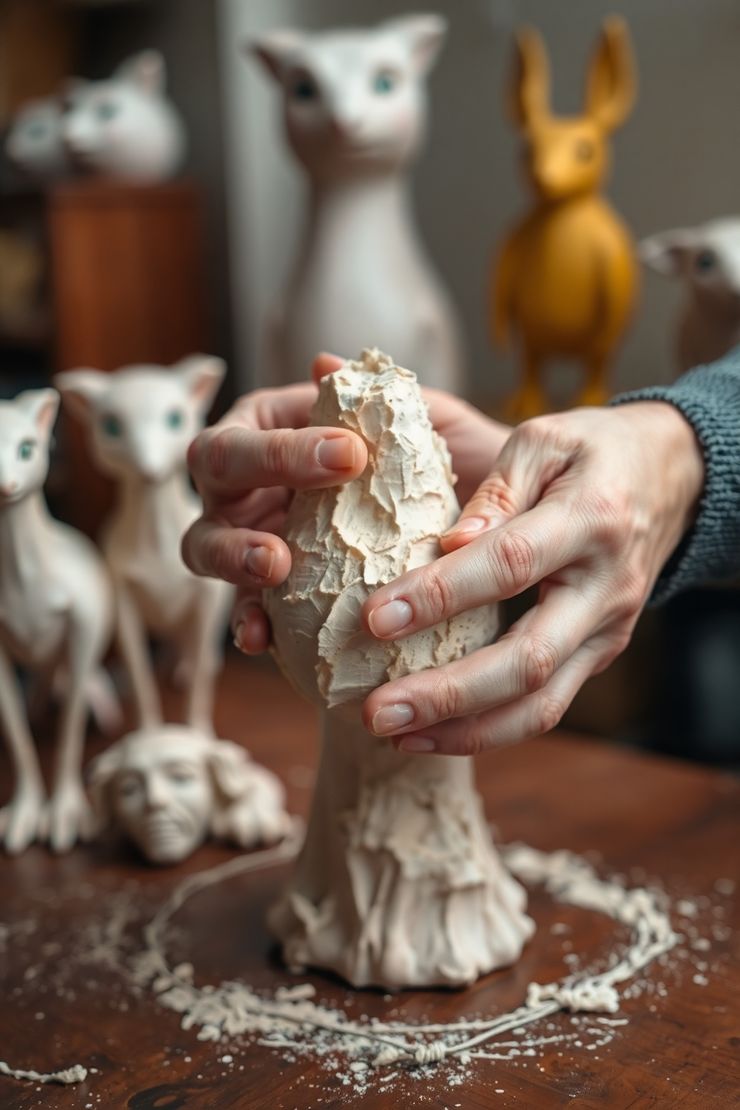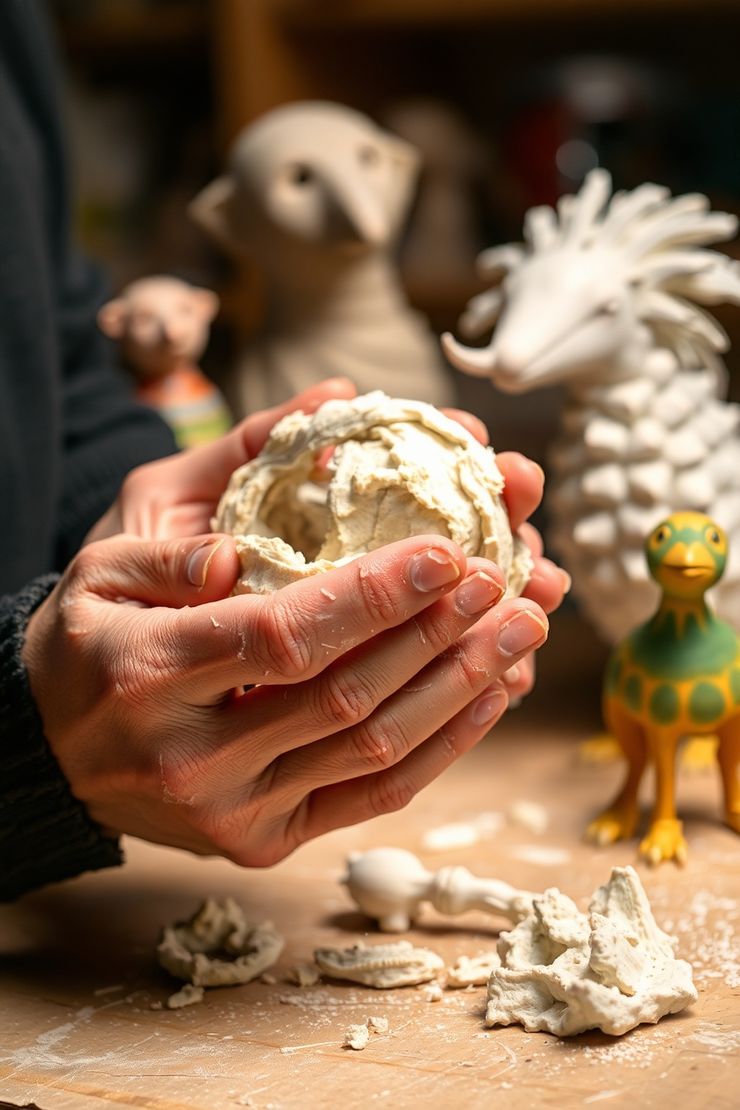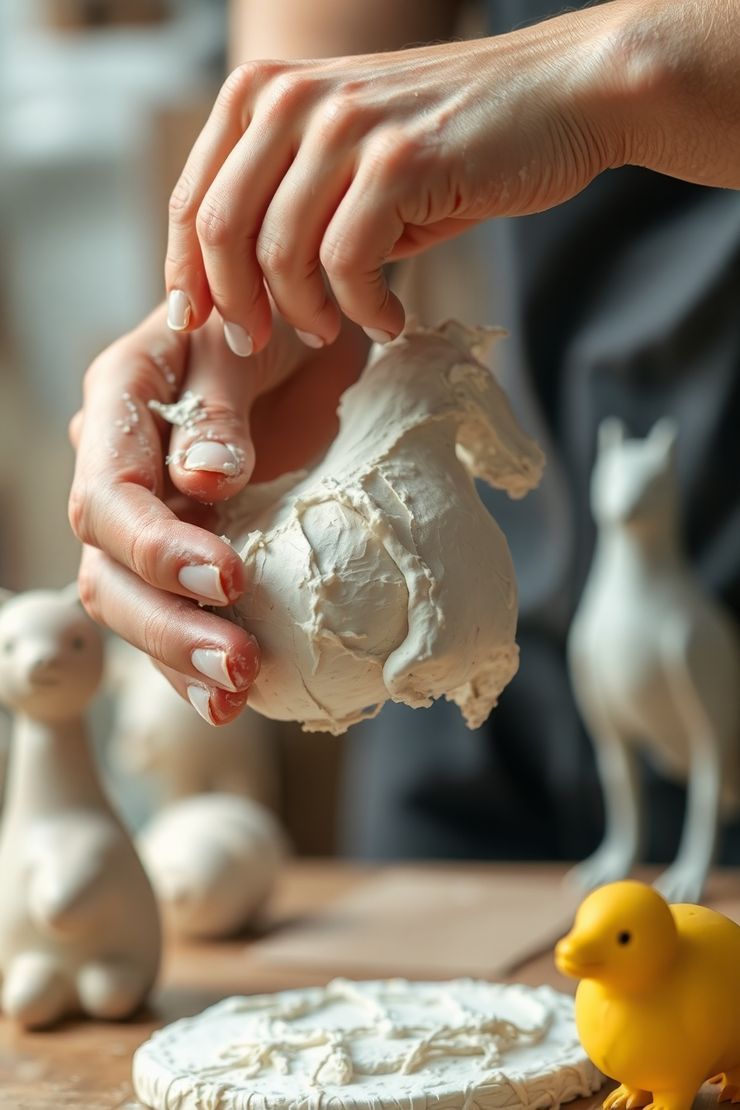Paper Mache
In the vast landscape of artistic
expression, few mediums possess the humble origins and boundless
potential of paper mache. Born from the simple act of repurposing paper
and adhesive, this timeless craft has captivated creators for centuries,
evolving from practical applications to a vibrant art form embraced by
individuals of all ages and skill levels.

What is it about the humble slurry of
paper and glue that continues to inspire? Perhaps it's the sheer
transformability of the materials, the alchemical process of turning
discarded scraps into sturdy, three-dimensional forms. Or maybe it's the
tactile engagement, the satisfying squish of the pulp between your
fingers as you mold and shape your vision into reality. Whatever the
draw, paper mache offers a unique blend of accessibility, affordability,
and artistic freedom that continues to resonate in our modern world.

A Journey Through Time: The
Enduring History of Paper Mache
The roots of paper mache run deep,
stretching back centuries across diverse cultures. Evidence suggests its
early forms were used in ancient China for creating helmets and
ceremonial masks. In Persia, intricate painted boxes and decorative
items were crafted with layers of paper. The 18th century saw a surge in
its popularity in Europe, where it was used to create everything from
architectural ornaments to furniture components, often lacquered and
gilded to mimic more expensive materials.
From its practical beginnings to its
artistic blossoming, paper mache has consistently demonstrated its
versatility and adaptability. It's a craft that has democratized
sculpture, allowing individuals without access to expensive tools or
materials to bring their three-dimensional ideas to life.
The Magic of the Mash:
Understanding the Basics of Paper Mache

At its core, paper mache involves
combining paper, typically newsprint or paper towels, with an adhesive,
most commonly a mixture of flour and water or diluted white glue. The
paper is torn or cut into strips and then saturated with the adhesive,
allowing it to become pliable and moldable. This pulp or these saturated
strips are then applied to a form or armature, layer by layer, building
up strength and shape as they dry.
The beauty of the process lies in its
simplicity and forgiving nature. Mistakes can often be smoothed over or
reworked, and the drying time allows for adjustments and refinements.
Once dry, the paper mache form becomes surprisingly rigid and can be
further embellished with paint, fabric, beads, and a myriad of other
decorative elements.
Unleashing Your Imagination: The
Limitless Possibilities of Paper Mache
The versatility of paper mache opens up a
universe of creative possibilities:
- Sculptures and Figurines:
From whimsical characters to abstract forms, paper mache allows for
the creation of unique three-dimensional art. The lightweight nature
of the dried material makes it ideal for large-scale pieces or
intricate details.
- Masks: A
traditional application of paper mache, mask-making allows for
exploration of character, emotion, and cultural expression. From
simple animal masks to elaborate theatrical creations, the
possibilities are endless.
- Decorative Bowls and Trays:
By molding paper mache over existing forms, functional and artistic
bowls, trays, and other containers can be created. These can be
painted and sealed for durability.
- Puppets and Props:
The lightweight yet sturdy nature of paper mache makes it perfect
for crafting puppets for storytelling and props for theatrical
productions or events.
- Holiday Decorations:
From festive ornaments to spooky Halloween creations, paper mache
offers a sustainable and personalized way to decorate for any
occasion.
- Architectural Models and
Dioramas: The ability to create detailed forms makes paper
mache a valuable tool for creating scale models and immersive
dioramas.
- Wearable Art: With
careful construction and sealing, paper mache can even be
transformed into unique pieces of wearable art, such as jewelry or
decorative elements on clothing.
Why Paper Mache Continues to
Captivate:

- Accessibility and
Affordability: The primary materials, paper and basic
adhesives, are readily available and inexpensive, making it a craft
accessible to everyone, regardless of budget.
- Tactile Engagement and
Stress Relief: The hands-on nature of paper mache can be
incredibly therapeutic, providing a sensory experience that grounds
and calms the mind.
- Creative Freedom and
Experimentation: The forgiving nature of the medium
encourages experimentation and allows for a wide range of artistic
styles and techniques.
- Sustainability:
Repurposing old newspapers and other paper scraps makes paper mache
a relatively eco-friendly craft.
- Endless Embellishment
Opportunities: Once the basic form is created, the
possibilities for painting, decorating, and adding mixed media
elements are limitless.
- A Craft for All Ages:
From children exploring their creativity to adults seeking a
relaxing and rewarding hobby, paper mache offers something for
everyone.
Getting Started on Your Paper
Mache Adventure:
Embarking on your paper mache journey is
as simple as gathering a few basic supplies:
- Paper: Old
newspapers torn into strips are ideal, but paper towels or even some
types of cardboard can be used for different textures.
- Adhesive: A simple
mixture of flour and water (cooked to a paste and cooled) or diluted
white school glue works well.
- Water: For mixing
the adhesive and wetting the paper.
- A Container: For
mixing the adhesive.
- A Form or Armature
(Optional): Balloons, wire frames, cardboard shapes, or
even sculpted clay can be used as a base to mold your paper mache
around.
- Protective Covering:
Newspaper or a plastic sheet to protect your work surface.
With these simple materials, you can
begin to explore the transformative power of paper mache. Let your
imagination be your guide, and don't be afraid to get your hands messy.
The sculptural soul of paper mache awaits, ready to bring your creative
visions to life, one layer at a time. It's a testament to the fact that
sometimes, the most extraordinary art can emerge from the most ordinary
beginnings. |



